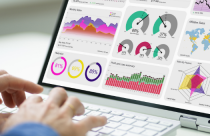How to Avoid Bias in Qualitative Research

You can also listen to this article as an audio recording.
Research bias occurs when researchers try to influence the results of their work, in order to get the outcome they want. Often, researchers may not be aware they are doing this. Whether they are aware or not, such behavior clearly severely affects the impartiality of a study and greatly reduces the value of the results.
The Issues in Qualitative Research
Recently, I discussed the problem of bias with a researcher friend.
“I heard that research bias is a bigger problem for qualitative research than quantitative research.”
“Why is that?”
“Qualitative research relies more on the experience and judgment of the researcher. Also, the type of data collected is subjective and unique to the person or situation. So it is much harder to avoid bias than in quantitative research.”
“Are there ways to avoid bias?”
“A good start is to recognize that bias exists in all research. We can then try to predict what type of bias we might have in our study, and try to avoid it as much as possible.”
Types of Bias in Research
“Are there different types of bias to watch out for?”
“Yes.
- There’s design bias, where the researcher does not consider bias in the design of the study. Factors like sample size, the range of participants, for example – all of these can cause bias.
- Next there’s also selection or sampling bias. For example, you might omit people of certain ages or ethnicities from your study. This is called omission bias. The other type, inclusive bias, is when you select a sample just because it is convenient. For example, if the people you select for your study are all college students, they are likely to share many characteristics.”
“Are there more?”
“Yes, there are lots of different types of bias.
- There’s procedural bias, where the way you carry out a study affects the results. For example, if you give people only a short time to answer questions, their responses will be rushed.
- There’s also measurement bias that can happen if the equipment you are using is faulty, or you are not using it correctly.”
“That’s a lot to think about.”
“I can think of three more.
- There’s interviewer bias, which is very hard to avoid. This is when an interviewer subconsciously influences the responses of the interviewee. Their body language might indicate their opinion, for example.
- Furthermore, there’s response bias, where someone tries to give the answers they think are “correct.”
- Finally, there’s reporting bias. This is often outside the researcher’s control. It means that research with positive, or exciting, results is far more likely to be reported, so can seem more critical.”
How to Avoid Bias in Research
“With so many types of bias, how can it be avoided?”
“There are a number of things the researcher can do to avoid bias.
- Read the guidelines: Check the guidelines of your institution or sponsor and make sure you follow them.
- Think about our objectives: Plan your study early. Be clear about what you want to achieve, and how. This will help to avoid bias when you start collecting data.”
“And next?”
- Maintain records: Keep detailed records. This reduces the chance of making mistakes.
- Be honest when reporting: Make sure you include all your results in your report. Even the results that don’t seem important. Finally, be honest about the limitations of your study in your report.”
Avoiding Participant Bias
“That explains what researchers can do. But what about participant bias?”
“Try asking indirect questions. People might change their answers to direct questions to make a good impression. But if you ask them what a friend or colleague might think, you might get a more honest response.”
“Are open-ended questions useful?”
“Yes. They allow information to flow more freely, by not forcing a limited set of answers. But even these should be used with caution. You should try to be impartial about all parts of the study, and avoid implying that there is a right answer. It might help to ask people to rate their responses on a scale of 1-5, for example, rather than agree/disagree.”
Reducing Researcher Bias
“All researchers should try to avoid confirmation bias. This is when you interpret your data in a way that supports your hypothesis. Secondly, you should make sure to analyze all your data, even if it doesn’t seem useful. Finally, always get an independent person to check your work, ideally several times during your study.”
Identifying and avoiding research bias in qualitative research is clearly tricky, with many different factors to consider. However, it is also vital. Biased research has little value; it is a waste of researchers’ valuable time and resources.
Learn even more about bias here. How did you overcome bias in your research? Share your experiences and thoughts in the comment section below.










Can you please tell me who is the author of this article: How to Avoid Bias in Qualitative Research
Last updated May 3, 2019
Thank you
Hi Nuzhat, the author of this article is Enago Academy